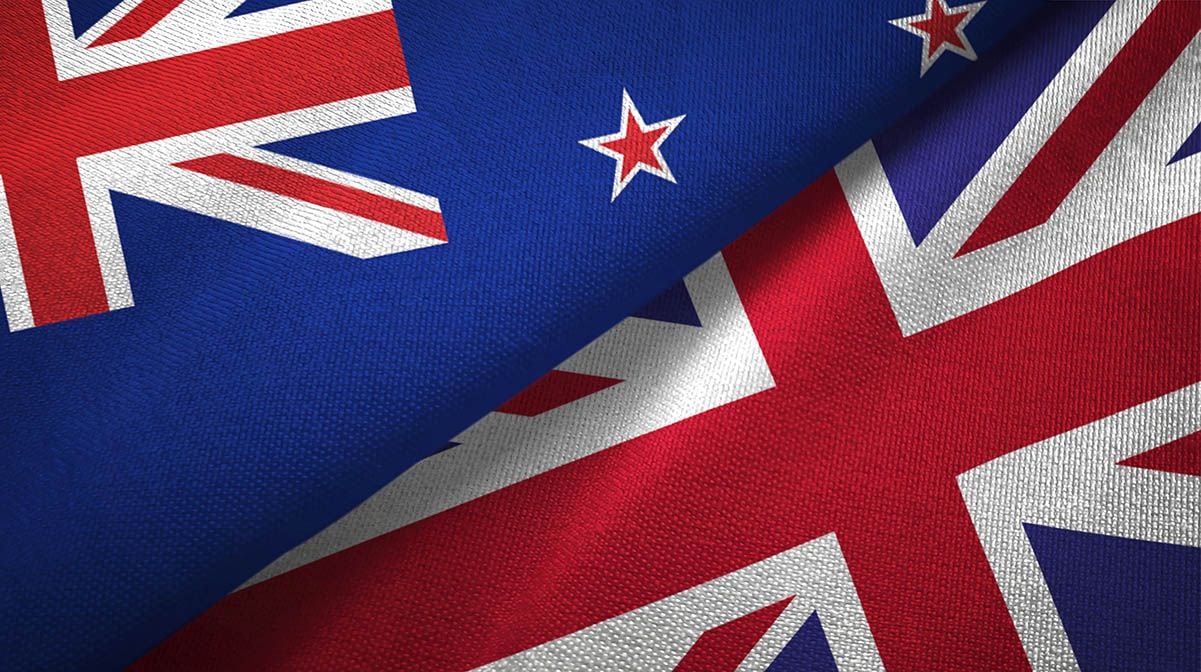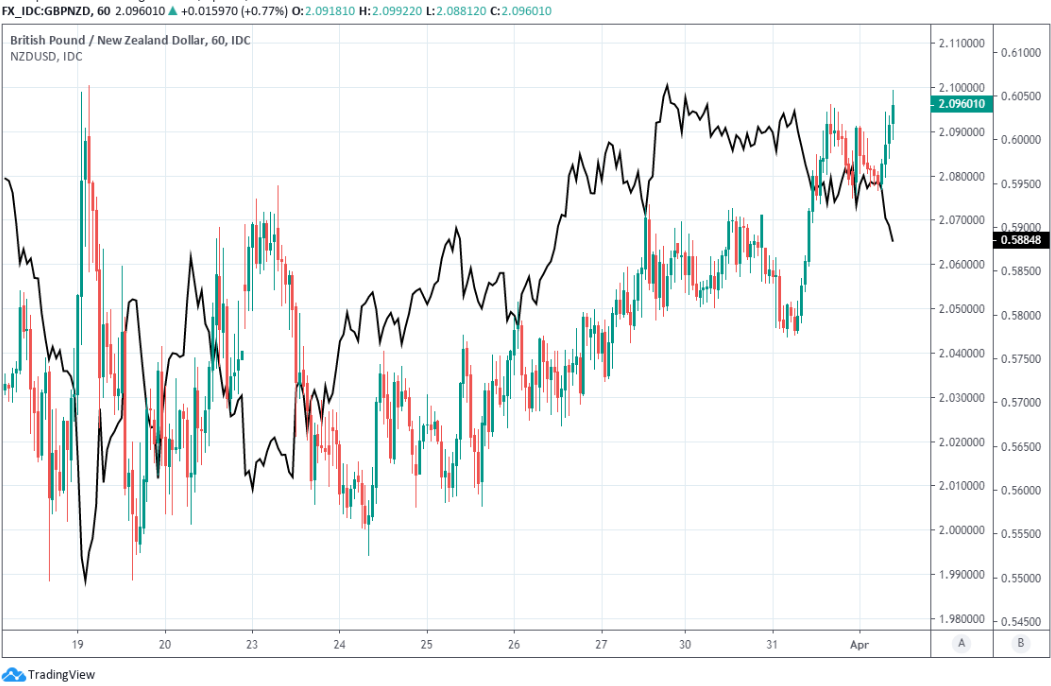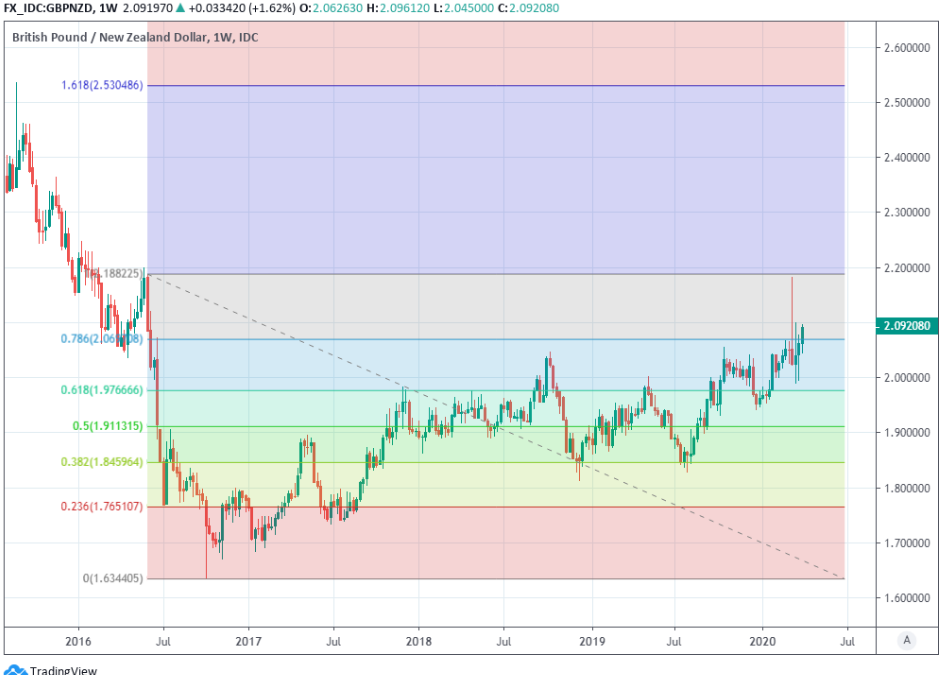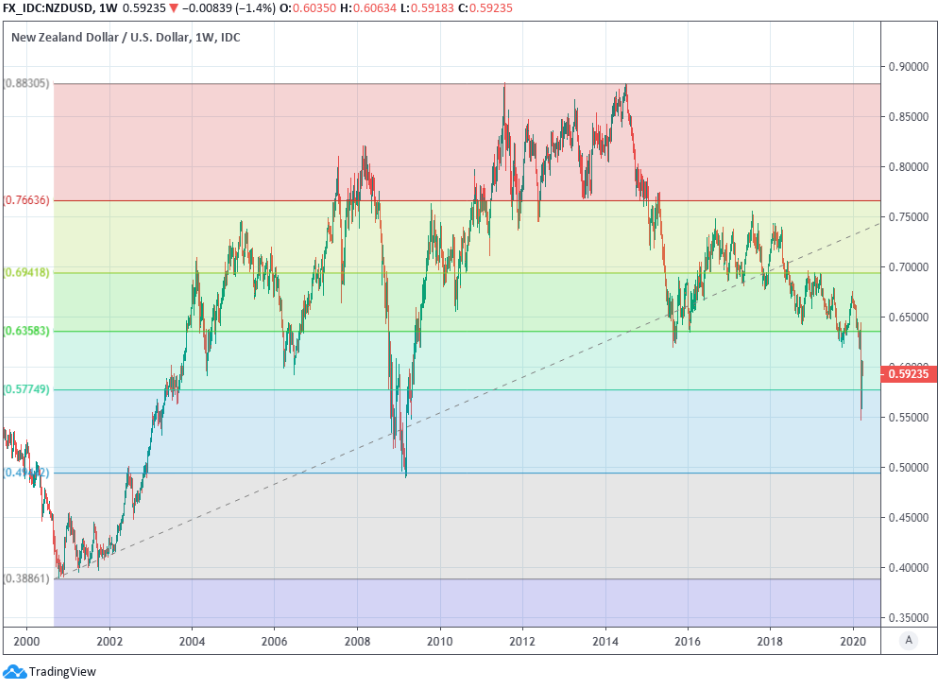Pound-New Zealand Dollar Rate Targets New Post-referendum High
- Written by: James Skinner
-

Image © Adobe Stock
- GBP/NZD Spot Rate: 2.0989, +0.65% on publication
- Indicative bank rates for transfers: 2.0185-2.0331
- Indicative broker rates for transfers: 2.0603-2.0729 >> find out more about this rate.
The Pound-New Zealand Dollar rate saw its largest intraday gain since January 2018 early this week and could now be targeting a fresh post-referendum high after rising above a key technical level in the process.
Pound Sterling benefited disproportionately again this week from what appeared for much of the early part to be a recovery of investor risk appetite, one which soured late on the Tuesday session when the coronavirus case and death count crept higher again in Europe and the U.S. Investors had chased risk assets higher early in the new week following a hat-trick of successive declines in the number of new cases reported in several major European hotspots.
Sharp increases in the number of increases in confirmed cases and deaths for Italy, France, Spain, the UK and the U.S. has knocked risk appetite and hurt the commodity sensitive Kiwi currency more than any other and especially relative to Sterling, which had suffered more in the early March sell-off than any other currency so has enjoyed a stronger recovery as the U.S. Dollar weakened.
Above: Pound-New Zealand Dollar rate at hourly intervals alongside NZD/USD rate (black line).
The Pound-New Zealand Dollar rate rose 1.64% to 2.0913 on Tuesday and was advancing further on Wednesday after having crossed over the 78.6% Fibonacci retracement of its post-referendum downtrend against the Kiwi.
The move across 2.0697 is a tentative one having only just occurred at the beginning of the new week and might need to be sustained through Friday's close for a bullish signal to be confirmed on the charts, which would then open the door for it to target fresh multi-year highs. Earlier breaks of 2.0697 were not sustained on a weekly basis through the Friday closes and so quickly gave way to a retreat by Sterling back below the retracement level.
The Pound-to-Kiwi rate can be calculated at a basic level by dividing the GBP/USD rate over NZD/USD. That GBP/USD rate has recovered sharply off what was its lowest level since 1985, set earlier in March, although some analysts say this correction is likely to end over the coming days and that it could then face a possible decline back to the 1.15 area from 1.24 on Wednesday. Meanwhile, NZD/USD has been unable to keep its head above water this week despite a once-better mood in financial markets.
Above: Pound-New Zealand Dollar rate re-testing 78.6% Fibonacci retracement of referendum downtrend.
"NZD/USD has softened overnight with some of the blame attributed to month-end rebalancing and part of it just broad USD strength. We remain more constructive on the NZD than on many other currencies on the food exporter thematic, but the NZD has never done well during synchronised global slowdowns and large-scale QE does risk capital outflows. Now that we’ve recaptured the highs and not pressed on, range trading beckons," says David Croy at ANZ. "Support 0.5830 Resistance 0.6100."
New Zealand's commodity heavy economy is also suffering amid a nationwide 'lockdown' aimed at arresting what was still one of the world's smallest coronavirus outbreaks on Tuesday. New Zealand had 708 confirmed coronavirus infections, which is equal to around 150 cases per million population and less than the 373 per million in the UK and other major European economies. The U.S. had more than 500 cases per million on Tuesday.
However, New Zealand's economic fate is also tied to that of the global economy given it's a commodity exporter that's as dependent on Chinese demand as commodity prices themselves are dependent on a robust global economy for support. This means that even if New Zealand is able to arrest its own outbreak of the deadly viral pneumonia promptly, the economy and Kiwi Dollar could still suffer until the global pandemic is brought under control.
Above: NZD/USD rate breaking below the 61.8% Fibonacci retracement of Sept 2000 - July 2014 uptrend.
"The week-old corrective rebound stalled, a 0.5900-0.6070 range possible," says Imre Speizer, head of NZ strategy at Westpac. "The global and NZ economies are facing unprecedented shocks, and governments and central banks are responding with emergency actions. Technical support is possible around the 0.5675 area (1999 peak) and then 0.4900 (GFC low)."
The government and Reserve Bank of New Zealand (RBNZ) have taken unprecedented actions to support the economy including through the launch of a NZ$30bn RBNZ quantiative easing program worth around 1% of GDP. The government has also flexed its relatively healthy and well looked after balance sheet by doling out loan guarantees to firms struggling with the fallout from the virus and increased welfare for affected citiziens.
New Zealand further extended on Tuesday for a further seven days, a state of emergency that requires many Kiwis to stay at home until the outbreak is over, although it also appealed to ministers to bring forward 'shovel ready' infrastructure projects this week that can be financed as part of an effort to get the economy going again once the outbreak is over. Nonetheless, analysts are bearish in their outlook for the Kiwi, which could favour continued gains for the Pound-New Zealand Dollar rate.
"When NZ's Finance Minister Grant Robertson handed down the fiscal packge on 17th March, he indicated another fiscal package is to be handed down at the May Budget, to assist with the post virus recovery. With the first package representing roughly 4% of GDP, and if we assume the NZ Government lifts its stimulus to roughly 10% of NZ GDP (Australian fiscal stimulus is now around that level), this equates to roughly the second fiscal package coming in at NZ$20b," says Prashant Newnaha, a rates strategist at TD Securities.







